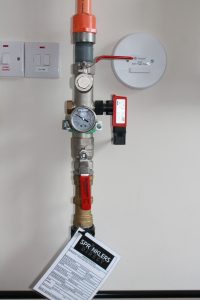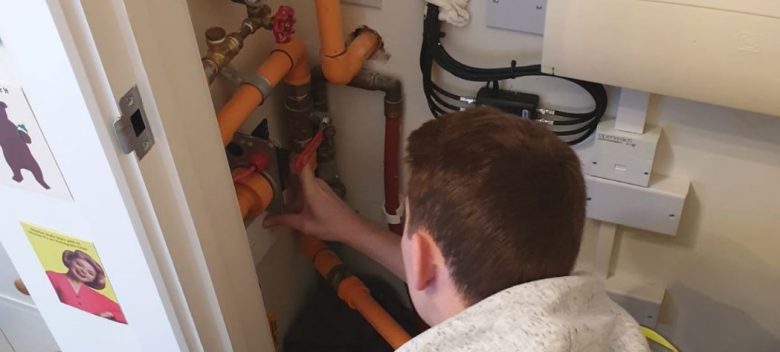Fire Sprinkler Test Requirements
What are the Requirements for Fire Sprinkler Testing?
It is the responsibility of the property owner to get the fire sprinkler regularly serviced (usually annually) by a competent person and be able to produce a valid certificate of conformity.
The British Standard and Approved Document B both advise the use of a third party accredited service company to carry out these inspections. Maintenance of the system might be a legal requirement in some circumstances and may also be a requirement of the building fire strategy.
What is the legal requirement for testing fire sprinklers?
Failure to maintain life safety equipment that did not activate can result in criminal proceedings under The Regulatory Reform (Fire Safety) Order 2005 England and Wales or The Fire Safety (Scotland) Regulations 2006.
 Fire Sprinkler Inspection and test procedures
Fire Sprinkler Inspection and test procedures
The sprinkler system should be subject to an annual inspection and test by a competent person, as follows.
- The system should be inspected to determine whether all components are functioning as designed. It is often necessary for the test engineer to get copies of the as installed design pressure and flow for the system, at the test points, before testing begins,
- The entire sprinkler system should be inspected for leaks.
- Any or all modifications to the sprinkler system should be inspected to ensure they have been carried out in accordance with the standard.
- If there has been an increase in fire loading or change in occupancy or purpose an assessment should be carried out to confirm the category of system.
- The sprinkler and cover plates should be inspected to determine whether they have been tampered with or whether their spray pattern has been impeded. Sprinkler head and cover is one of the main items for inspection. With the increase in the number of concealed sprinklers being installed the risk of failure due to cover issues has increased. For example have they been painted over.
- Valves should be exercised to ensure free movement and any locking mechanism should be checked and reinstated.
- The test valve should be operated to determine whether the system’s design flow rate and pressure, as hydraulically calculated, is achieved.
- Alarms should be tested to ensure they are function as designed.
- Backflow prevention devices should be maintained in accordance with manufacturers recommendations or BSEN 806-5.
- Any remote monitoring arrangements should be tested to determine whether they are being transmitted and received correctly.
- Where trace heating is installed, its operation should be checked.
Fire Sprinkler Test Requirements
Fire Sprinkler systems installed in accordance with BS9251:2014 are designed and installed as a measure for the protection of life in the event of a fire. Ensuring that the sprinkler system is maintained and fit for purpose when needed to detect and protect against fire 24 hours a day, 365 days per year is important.
To find out more don’t hesitate to contact us or book your sprinkler service now on line by selecting the button at the top of this page.








